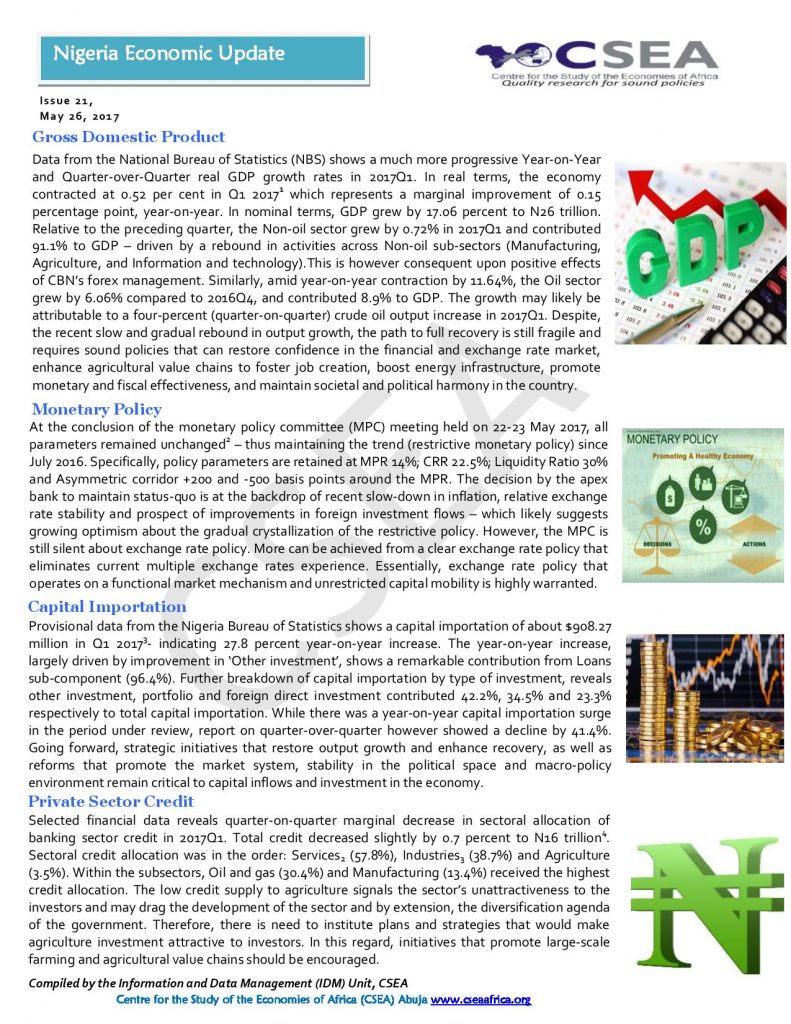Macroeconomic Report & Economic Updates

July 4, 2017
Nigeria Economic Update (Issue 21)
Nigerias domestic crude production increased significantly in April 2017. OPECs Month-on-Month data shows a 22.6 percent increase to 1.5 million barrels per day constituting the biggest increase among oil producing group. Crude production increased at the backdrop of completion of scheduled maintenance/repairs at the Bonga oil field, implying resumption of crude production by an additional 225,000 barrels. Remarkably, Nigeria is progressively moving towards meeting daily output benchmark/target (2.2 million barrels per day). Given recent boost in domestic crude oil production, considerable effort should be made to improve the countrys refining capacity in order to reduce fuel importation and conserve foreign exchange.
